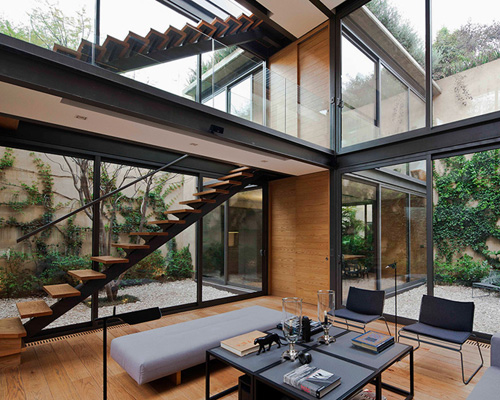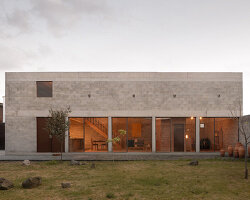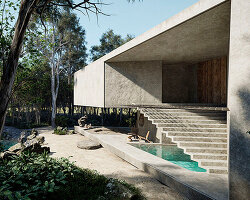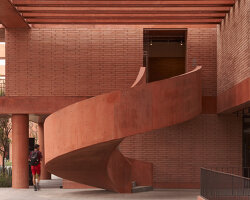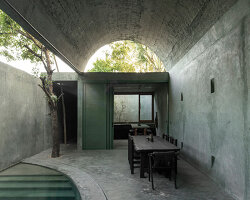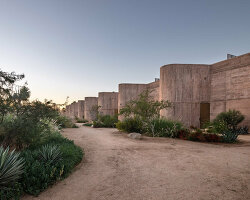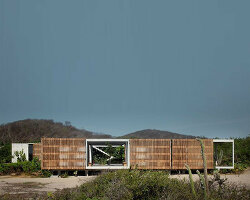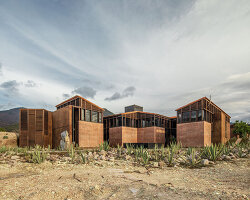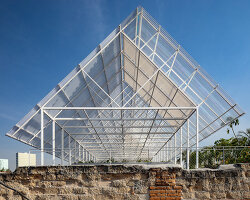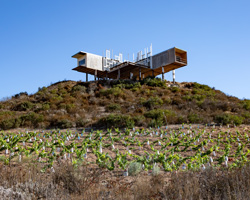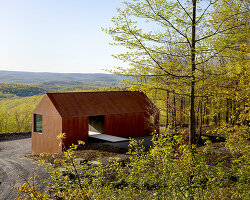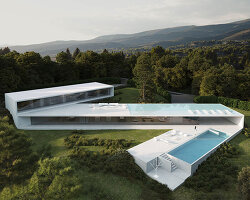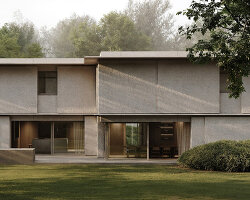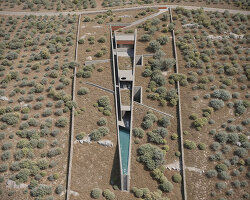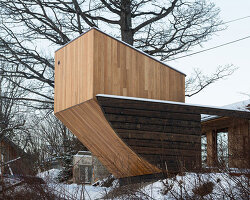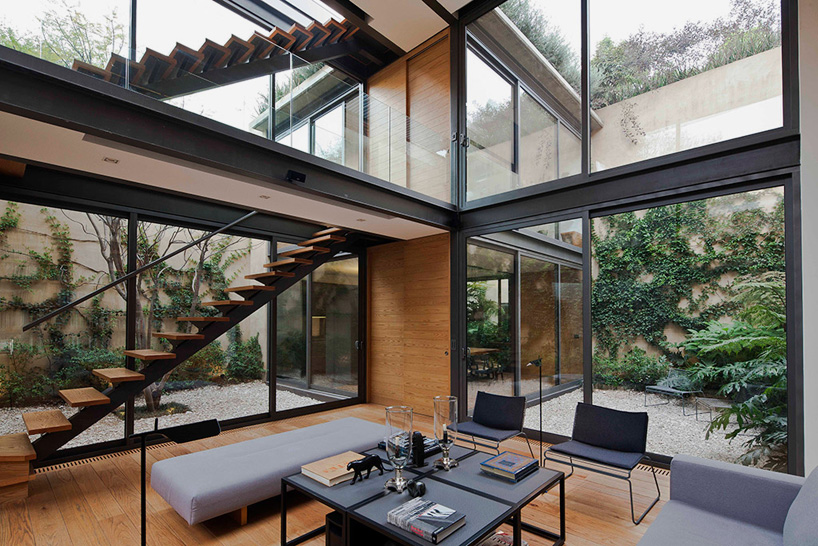
situated in mexico city’s tacubaya district, this dwelling designed by andrés stebelski has been arranged around four external courtyards. the residence replaces a dilapidated structure which was subsequently demolished to make way for the new building.

glazed partitions ensure that the home is read as a singular environment
all images by onnis luque , courtesy of andrés stebelski arquitecto
surrounding the entirety of the property, a perimeter wall climbs to a height of six meters, respecting the scale of both neighboring properties and the adjacent streetscape. with its alternating internal volumes and external voids, the floor plan reads as a chessboard. however, glazed partitions between each space ensure that the home is read as a singular integrated environment.
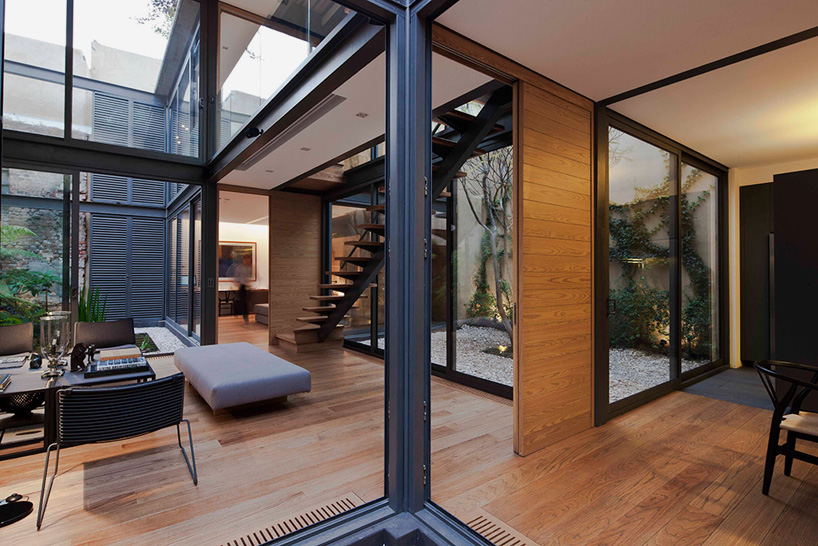
a structural steel grid creates a three-dimensional framework that delineates the dwelling
a structural steel grid creates a three-dimensional framework that delineates the various zones. living accommodation is divided between two storeys, with shared spaces – including a kitchen, dining room and study – found at ground level, and private sleeping positioned above. on the roof, a planted terrace serves as a quiet place for relaxation, offering views across the neighborhood.

four courtyards are found throughout the residence
a structural steel grid creates a three-dimensional framework that delineates the various zones. living accommodation is divided between two storeys, with shared spaces – including a kitchen, dining room and study – found at ground level, and private sleeping positioned above. on the roof, a planted terrace serves as a quiet place for relaxation, offering views across the neighborhood.
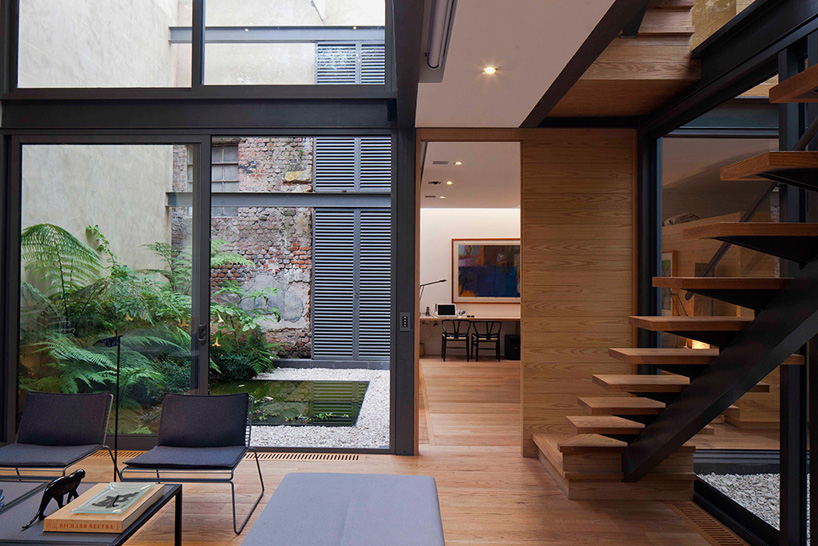
primary living accommodation is found at ground level
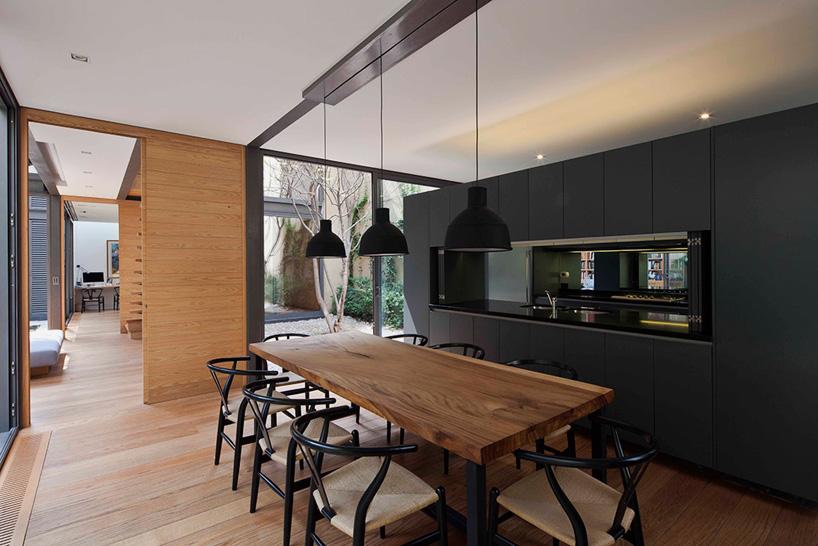
the house’s kitchen and dining area
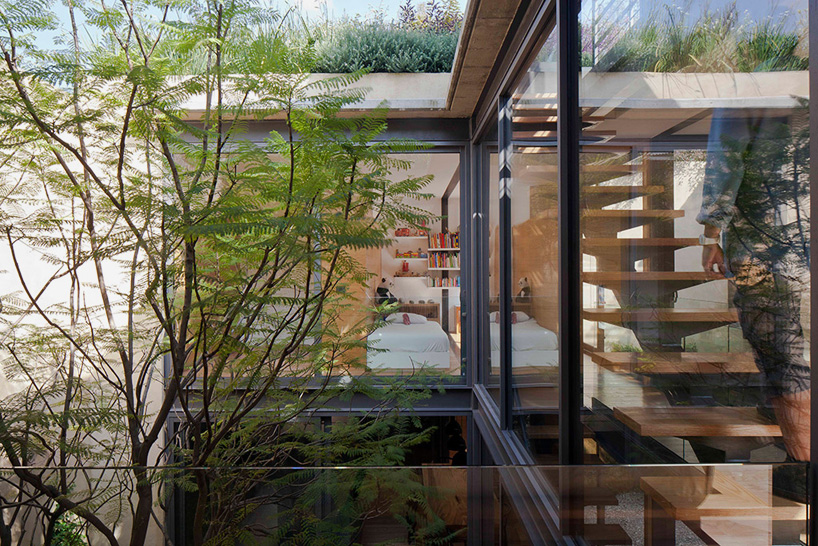
sleeping quarters are found at the upper storey
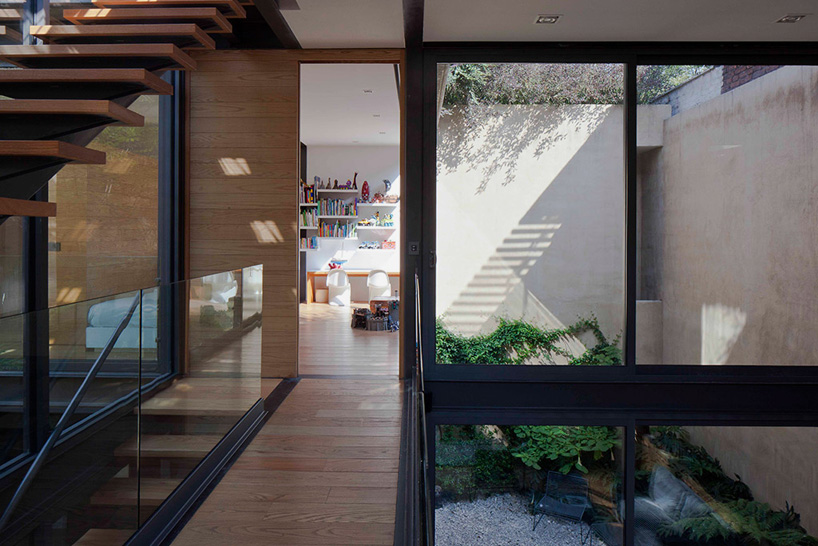
a timber stairway leads to a rooftop retreat
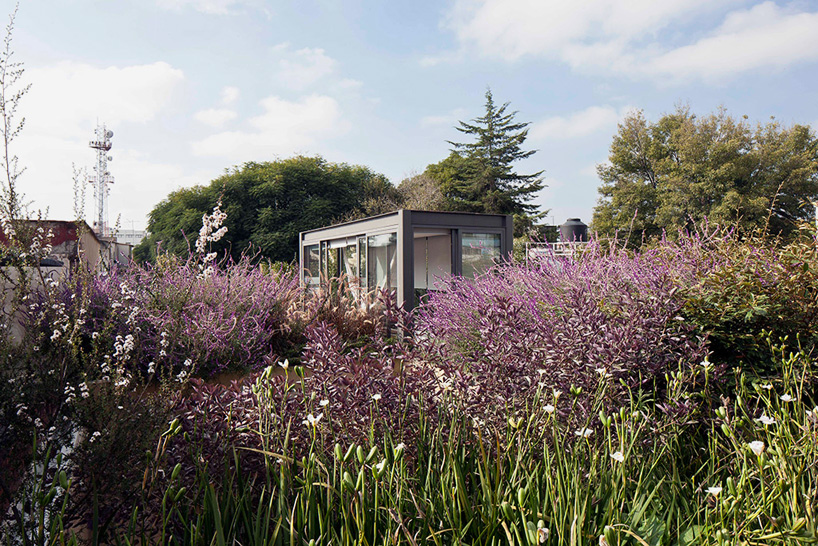
the planted terrace serves as a quiet place for relaxation
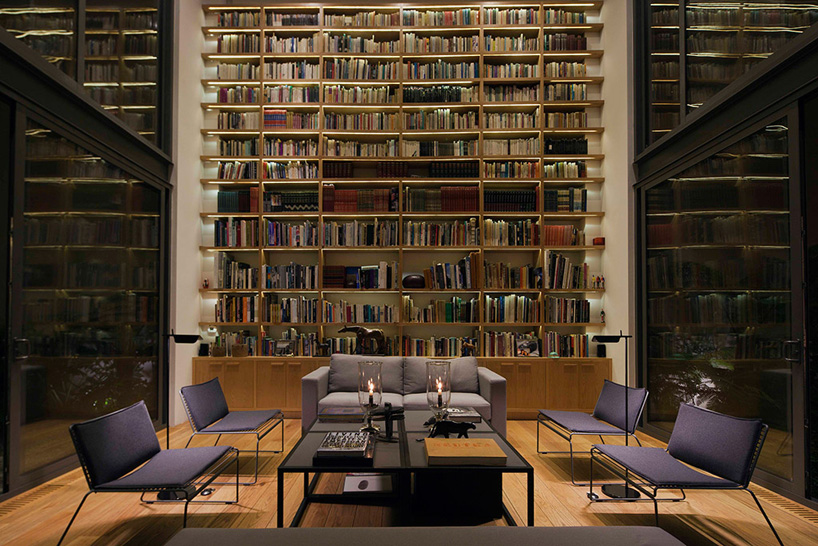
a large shelving unit is filled with books

the scheme’s double-height lounge
